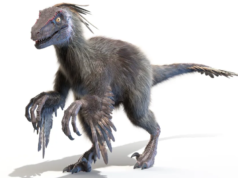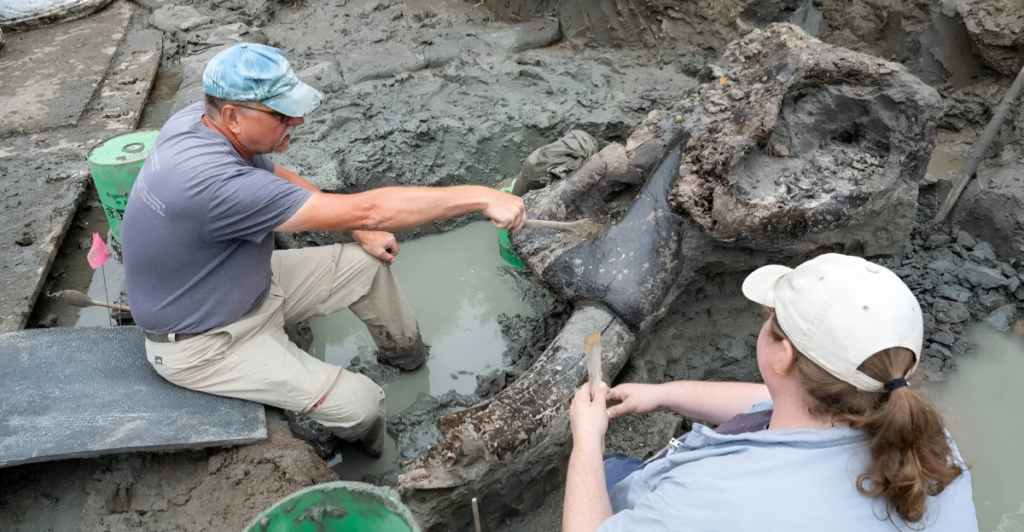
In a strange collision of curiosity, nature, and ancient history, a high school student walking in a creek in Oskaloosa, Iowa, stumbled on a jaw-dropping find—literally. It wasn’t a rock, a fossilized fish, or even the arrowhead he was searching for.
It was the lower jawbone of a young mastodon, an extinct elephant-like mammal that roamed North America tens of thousands of years ago. Dated to around 34,000 years ago, the jawbone provides a direct connection to the Pleistocene period—a time when giant creatures walked the earth.
The find immediately caught the imagination of paleontologists and created a buzz in academic circles and among fossil enthusiasts. But beyond the science is a larger story—one of timing, preservation, and what can still be uncovered beneath our feet.
The Accidental Discovery
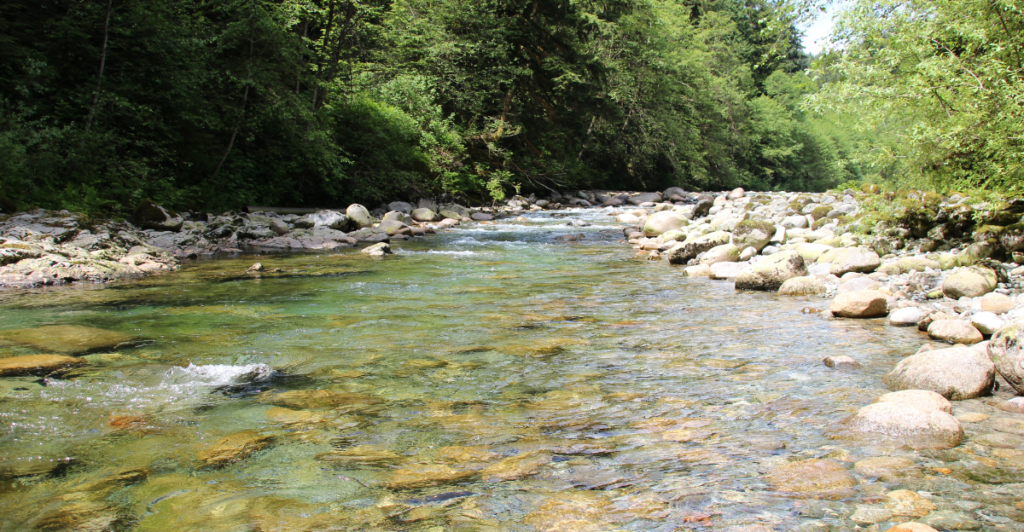
It was a summer afternoon like any other for Jackson Hepner, who was exploring a friend’s farm in the hopes of finding Native American relics in the soft creek bed. Instead, what he pulled from the creek was a heavy dirt-encrusted object nearly three feet long and decidedly unusual.
He brought the giant bone back to the farmhouse, where the owners recognized its potential significance. Rather than risk further damage or leaving it in the open air, they immediately contacted paleontologists from the University of Iowa.
The bone, quickly recognized as part of the lower jaw of a juvenile mastodon, was complete with teeth. This discovery speaks to the everyday potential to stumble upon the ancient history lying in America’s quiet farmlands.
Understanding the Mastodon
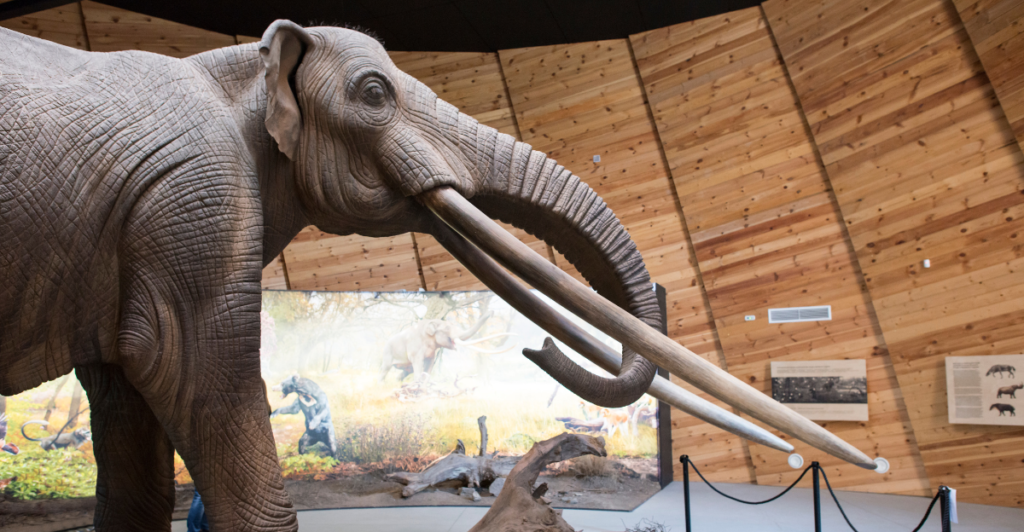
Mastodons (from the Mammut genus) were huge, furry relatives of modern elephants that lived in North and Central America from approximately 3.5 million years ago until they became extinct about 10,500 years ago.
They had straighter tusks than woolly mammoths and characteristic molars with cone-cusped teeth, perfectly adapted to chewing shrubs and tree branches. The Iowa specimen—a young mastodon roughly seven feet tall and weighing up to two tons—contributes to our understanding of their physical development and migration habits.
Their extinction was likely the result of climate change and human predation, though this is a subject of debate. Therefore, each fossil, especially juvenile specimens, increases our understanding of life in the Pleistocene era.
The Significance of the Discovery
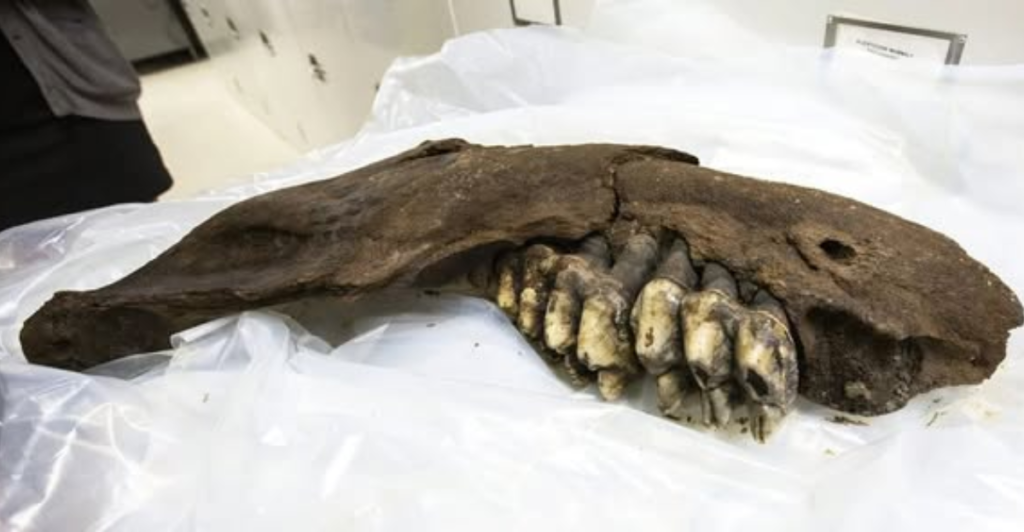
At first glance, the jawbone may resemble a typical fossil, but its significance lies far beyond its creek bed origin. To start, it’s remarkably well-preserved, considering that it’s more than 30,000 years old and was located in a creek constantly threatened by erosion, water damage, and scavenging animals.
The bone offers scientists a rare opportunity to study a juvenile, which is rare when compared to the number of adult fossils in current records. Additionally, the discovery expands the species’ geographic range across the Midwest, providing new information that refines species timelines.
In a time when many fossil finds are found in a deteriorated, fragmented, or contaminated state, this nearly pristine jawbone is a paleontologist’s dream: local, ancient, and largely intact.
Preservation and Analysis

Once the jawbone was handed over to the University of Iowa’s Paleontology Repository, steps were taken to preserve its integrity. Fossils found in aquatic environments are extremely vulnerable to cracking and degradation as they begin to dry.
To prevent that, researchers placed the jaw in a controlled climate and closely monitored it to regulate its water content. Advanced imaging techniques, such as 3D scanning and CT examination, were used to record the specimen in breathtaking detail.
Radiocarbon dating and isotopic analysis confirmed its age (roughly 34,000 years old) and helped scientists determine the climate and vegetation of the region when the animal was alive. Every ridge on the bone, every worn molar, tells a story—and in this case, a beautifully preserved chapter in Ice Age ecology.
Mastodons vs. Mammoths
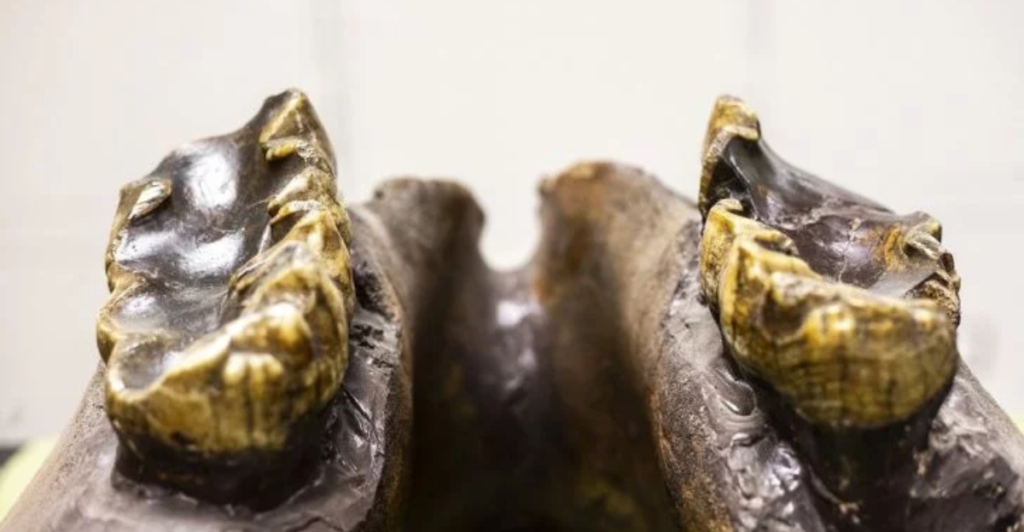
Mastodons are often confused with mammoths, and while they are both part of the Proboscidean family, they were distinct species with a number of differences, such as noticeable differences in their dental makeup.
Mastodons had broad, flat teeth with conical cusps ideal for grinding and crushing tough plant food, such as twigs and leaves. Mammoths, however, had more complex teeth with numerous ridges adapted for grazing on grass and other vegetation.
Further, mastodons had flatter crania and were shorter and stockier than mammoths, which were taller and were built more similarly to modern elephants. These differences not only indicate the diversity within the Proboscidean family but also the unique adaptations that allowed these animals to thrive under different conditions during the Ice Age.
Community Contributions to Paleontology
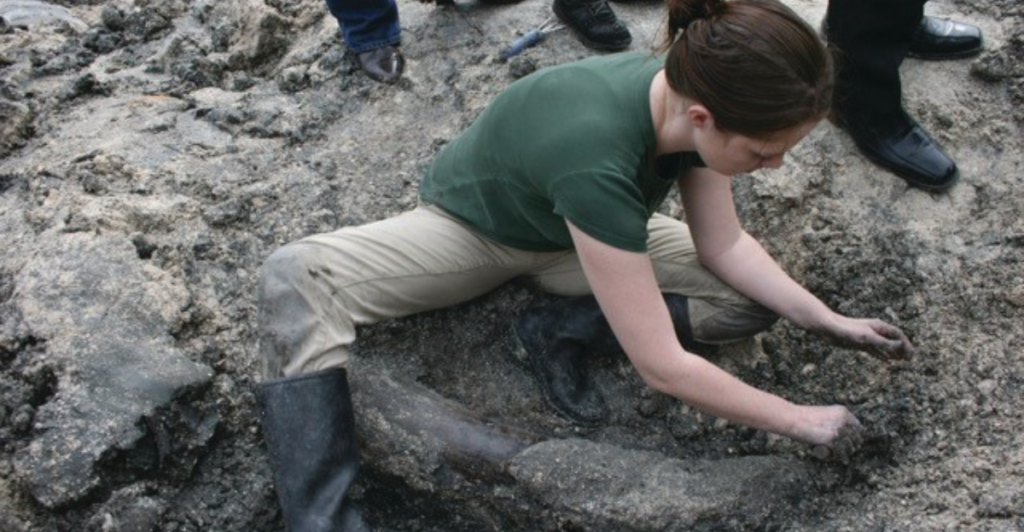
This mastodon story is more than a fascinating headline—it’s an ode to community-based science. Jackson Hepner’s findings and the initiative of the farm owners illustrate how amateurs can contribute significantly to academic research.
Had the bone been left outside or thoughtlessly discarded, it might have been lost forever. Instead, their curiosity led to a collaboration with professionals, and a pivotal fossil was preserved and studied. This is not an isolated incident, either; many significant finds across North America have been made by the public.
Therefore, community contributions are key in paleontology. If citizens are made aware of the scientific importance of what could be lying beneath their feet, they become a vital part of protecting the past for future generations.
Iowa’s Rich Fossil Record
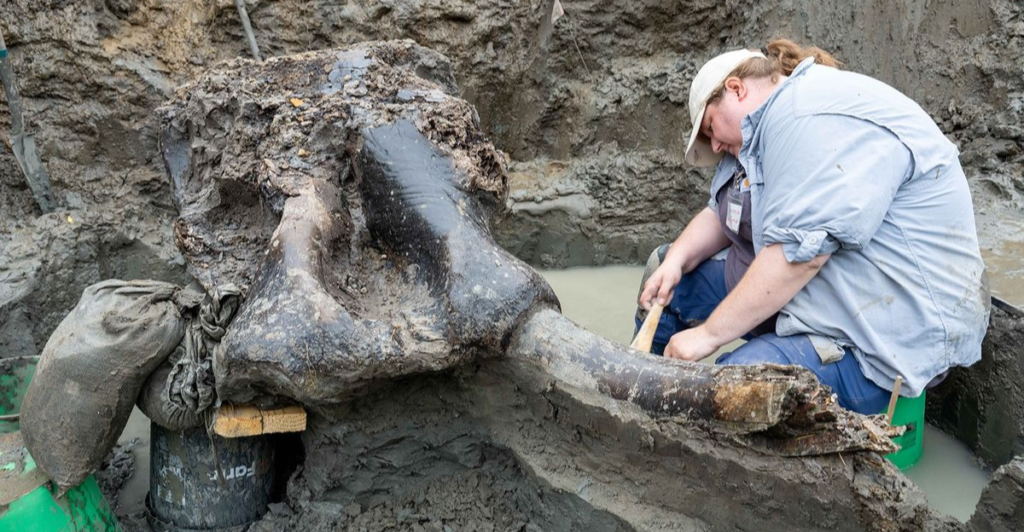
Although it may appear dull now, Iowa once had an energetic, biologically rich landscape shaped by ancient seas and glaciation. Its bedrock and sedimentary deposits have yielded discoveries ranging from trilobites to Ice Age giants.
In fact, older mastodon remains have been uncovered all over the region, such as the 13,600-year-old skull unearthed mere months before this jawbone was discovered. These fossils indicate a booming megafauna community that adapted to a cooler and more forested environment.
Glacial meltwater, sediment transport, and Iowa’s relatively stable topography contribute to the preservation of these bones over time. The state’s contribution to North American paleontology is often overlooked, but each new discovery makes it clear that Iowa is an ancient repository that lies in plain sight.
Implications for Understanding Extinction Events
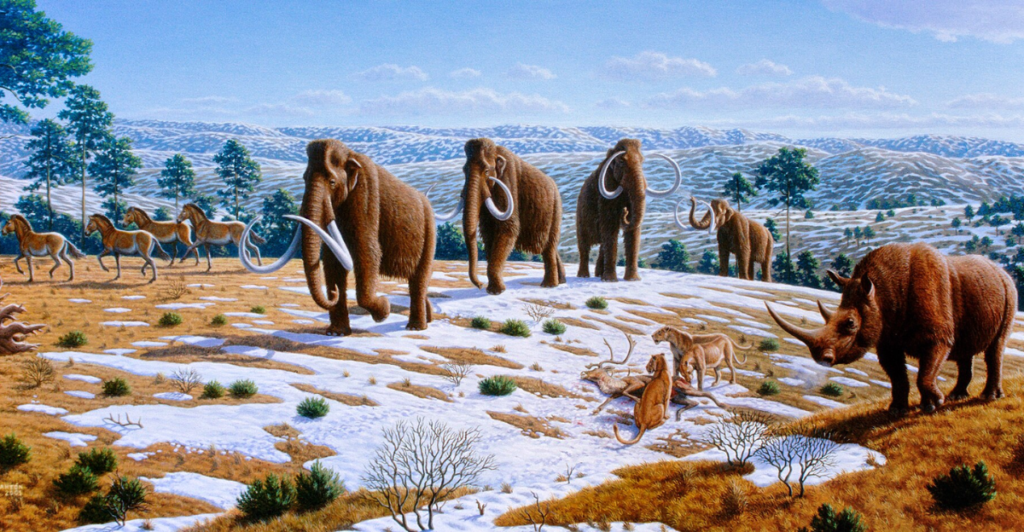
Mastodons are the center of ongoing debates about the causes of late Pleistocene extinctions. Did they vanish due to climate change? Or were they driven to extinction by early humans traveling across the continent?
With every new discovery comes a vital piece of the puzzle. For example, tooth wear patterns, stomach contents (if available), and soil carbon dating can provide insight into species’ diet, health, and cause of death. These data points enable researchers to make hypotheses about the causes and timing of extinction events.
While many experts argue that a combination of human activity and environmental stresses led to species extinction, discoveries like these give scientists more information and evidence, bringing us closer to understanding one of Earth’s most significant biological changes.
The Continuing Search for Knowledge
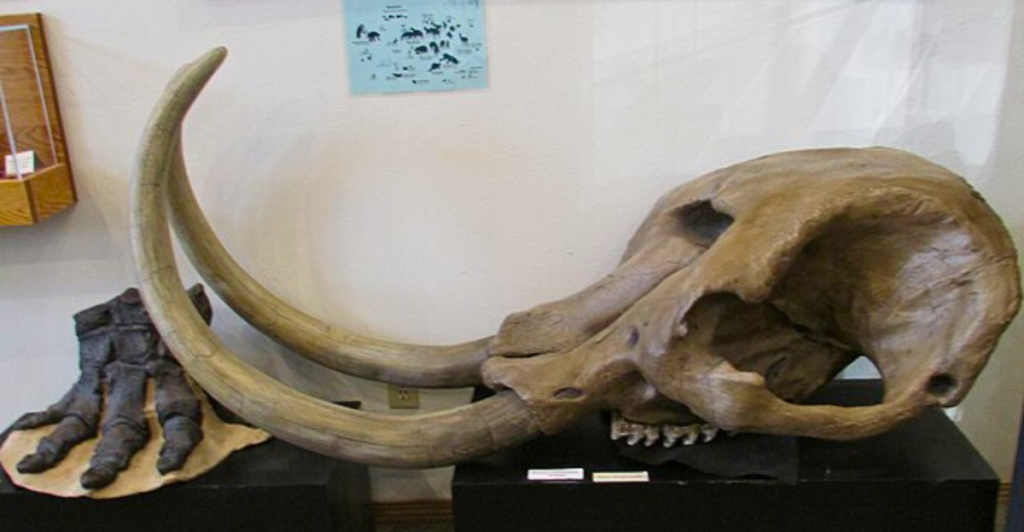
Apart from its scientific value, the mastodon jawbone has become a regional phenomenon—a tangible piece of ancient history kept at the University of Iowa that students, teachers, and the whole community can view and learn about.
What makes this story so special isn’t even the age of the fossil or the coincidence of discovery—it’s what it represents. Even in the 21st century, the Earth still holds secrets beneath its surface, waiting for eager eyes and willing minds to discover them.
As climate shifts and human development expands, the clock is ticking on the number of yet-to-be-found fossils. The Iowa mastodon jawbone serves as a reminder that scientific breakthroughs aren’t limited to the laboratory or excavation sites; occasionally, they start with a walk along a creek.
Explore more of our trending stories and hit Follow to keep them coming to your feed!

Don’t miss out on more stories like this! Hit the Follow button at the top of this article to stay updated with the latest news. Share your thoughts in the comments—we’d love to hear from you!



